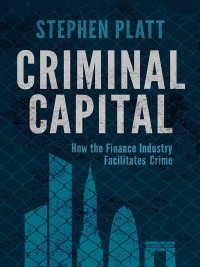Question
Vollmer Manufacturing makes three components for sale to refrigeration companies. The components are processed on two machines: a shaper and a grinder. The times (in
Vollmer Manufacturing makes three components for sale to refrigeration companies. The components are processed on two machines: a shaper and a grinder. The times (in minutes) required on each machine are as follows.
| Machine | ||
|---|---|---|
| Component | Shaper | Grinder |
| 1 | 6 | 4 |
| 2 | 4 | 5 |
| 3 | 4 | 2 |
The shaper is available for 120 hours, and the grinder is available for 110 hours. No more than 200 units of component 3 can be sold, but up to 800 units of each of the other components can be sold. In fact, the company already has orders for 600 units of component 1 that must be satisfied. The per unit selling price and per unit variable costs for each of the three components are as follows.
| Component | Selling Price | Material Cost | Labor Cost |
|---|---|---|---|
| 1 | $25 | $12 | $5 |
| 2 | $18 | $8 | $4 |
| 3 | $27 | $13 | $5 |
(a)
For each component, calculate the profit margin (in dollars, profit margin = selling price material cost labor cost).
component 1 $___
component 2 $___
component 3 $___
Formulate and solve for the recommended production quantities that will maximize contribution to profit.
component 1 ___ units
component 2 ___ units
component 3 ___units
(b)
What are the objective coefficient ranges (in dollars) for the three components? (If there is no upper or lower limit, enter NO LIMIT. Round your answers to two decimal places.)
component 1 $ ___to $ ___
component 2 $ ___to $ ____
component 3 $ ___ to $ ___
Interpret these ranges for company management.
A. Individual changes in the profit coefficients outside these ranges will not cause a change in the optimal number of components to produce.
B. Individual changes in the profit coefficients within these ranges will not cause a change in the optimal number of components to produce.
C. Individual changes in the profit coefficients within these ranges will cause changes in the optimal number of components to produce.
(c)
What are the right-hand-side ranges? (Use minutes for time. If there is no upper or lower limit, enter NO LIMIT. Round your answers to the nearest integer.)
shaper availability
____ to ____
grinder availability
____ to ____
Interpret these ranges for company management.
A. These are the ranges over which the shadow prices for the associated constraints are not applicable.
B. These are the ranges over which the shadow prices for the associated constraints are applicable.
C. These are the ranges over which the reduced costs for the associated constraints are applicable.
D. These are the ranges over which the reduced costs for the associated constraints are not applicable.
(d)
If more time could be made available on the grinder, how much would it be worth?
A. Every additional minute on the grinder decreases profits by $1.
B. Every additional minute on the grinder increases profits by $3.
C. Nothing, since there are 300 minutes of slack time on the grinder at the optimal solution.
D. Every additional minute on the grinder increases profits by $1.50.
(e)
If more units of component 3 can be sold by reducing the sales price by $4, should the company reduce the price?
A. Yes. Every additional unit of component 3 increases profits by $3.
B. Yes. At that price, the optimal solution would produce 700 units of component 3.
C. No. There is a slack of 300 units so selling more would not improve profits.
D. No. At that price, the optimal solution would not produce any of component 3.
Step by Step Solution
There are 3 Steps involved in it
Step: 1

Get Instant Access to Expert-Tailored Solutions
See step-by-step solutions with expert insights and AI powered tools for academic success
Step: 2

Step: 3

Ace Your Homework with AI
Get the answers you need in no time with our AI-driven, step-by-step assistance
Get Started


